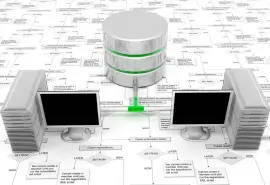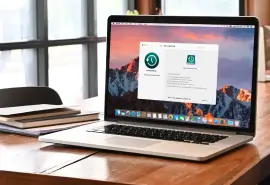What about cost? Sure, many backup plans are cost prohibitive or require a year's service for an upfront fee, but what about the free alternatives? If you can protect your data with just the equipment you have on hand and nothing else, will you do it?
Here are two options for securing your files at nearly no cost to you.
Easy File backup
The simplest and most cost effective way to secure your important files from data loss is to use one of the many free cloud services. Take your pick from Google Drive, Dropbox, OneDrive, and the many other providers of simple, folder-based cloud storage and make use of the free storage.
Take Google Drive for example. All you need to get started with Google Drive is an active Google account and a PC to install the drive on. Head to drive.google.com and select Download Drive. Follow the instructions from the installation process and then you are done. Just log in with your account information and you can begin copying files from your normal PC folders into the Google Drive folder. Now these files will be located on your PC as well as in your Google Drive in the Cloud.
You will be able to access and edit directly from the Google Drive folder with no need to copy and paste back and forth.
System Image Backup
Microsoft also makes it easy to protect your PC with a free, pre-installed tool called System Image Backup. The tool creates an image of your computer with all of your Windows settings, programs, and files in a format that allows for a full restoration. System Image Backup is a great too for a single PC restoration, but is not as comprehensive as some pay services and will occasionally run into issues when attempting to restore an image on a different hardware setup.
To begin the backup process using System Image Backup, you will first need to use another free tool provided by your Windows OS, called Recovery. This tool creates a recovery drive from a USB drive or disks that allows your PC to boot into the Windows Recovery Tool without the necessity of a functioning operating system. The process is easy, but will destroy any data already located on the destination drive, so be sure to use a USB drive that is empty or unneeded.
To access the Recovery tool, open up the Windows Search tool and type in Recovery. Choose Create A Recovery Drive and follow the instructions. This recovery tool will allow you to boot your PC to a recovery mode in the event of a catastrophic failure and allow you to recover your system from the backup image we are about to create.
Once your recovery drive is finished, you are now ready to create your backup image. To access the Windows System Image Backup tool, open up the Windows Search tool again and type in File History. The link to System Image Backup will be located in the bottom left-hand corner of the screen. Click the link and then the System Image Backup interface will appear.
From the new interface, follow the instructions, which will ask you to select a destination drive, network location, or disk options. Select the option you feel most comfortable with, but understand that the disk option will require a significant amount of disks to backup your PC fully. Once the backup process is complete, you will be able to restore your PC to this version of its file structure. Be sure to continue to make images on a regular schedule to protect your system as it evolves.
More Information
For more information on previous articles about system backups and bullet-proof backup plans, take a look at the follow links:







